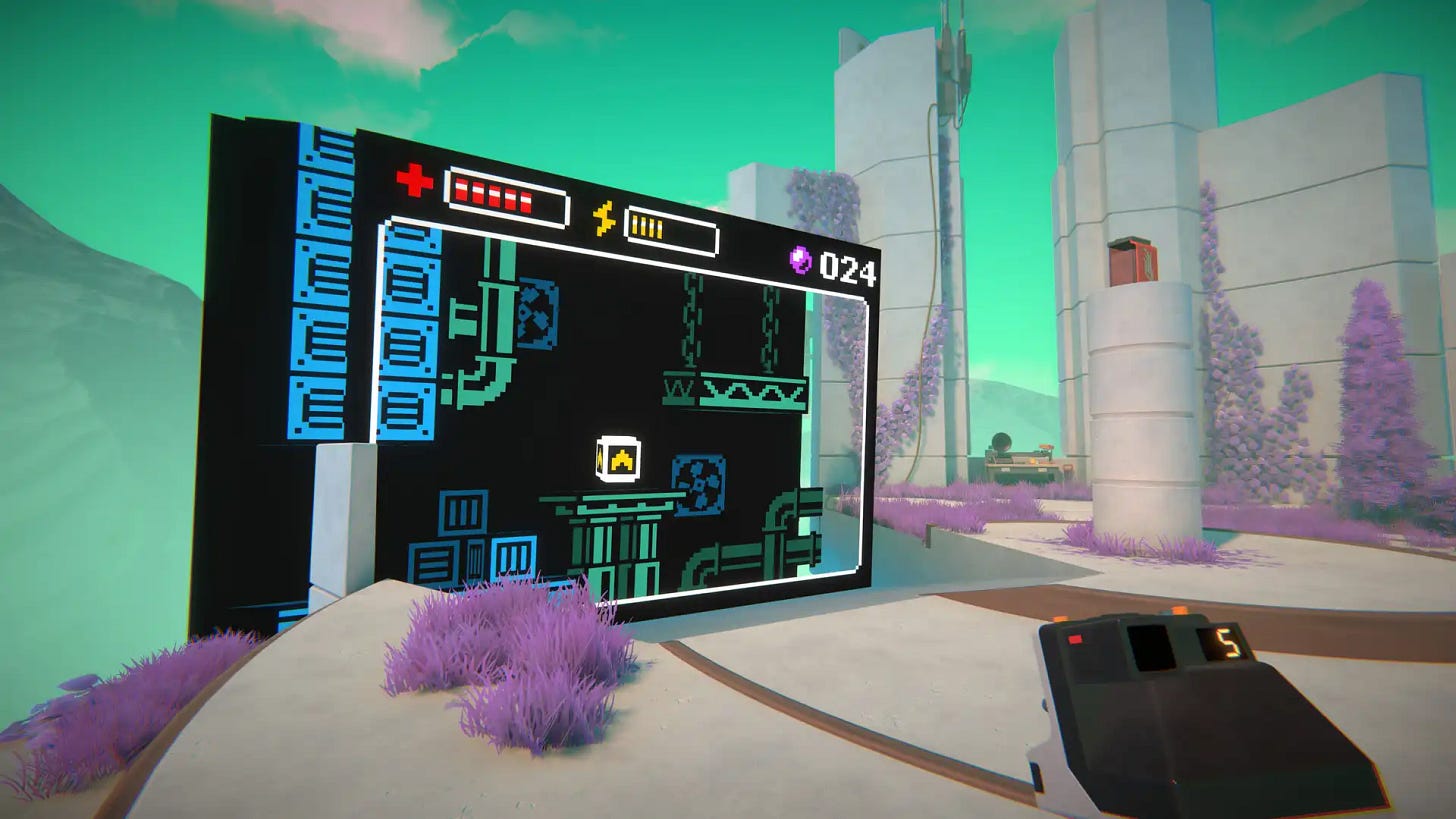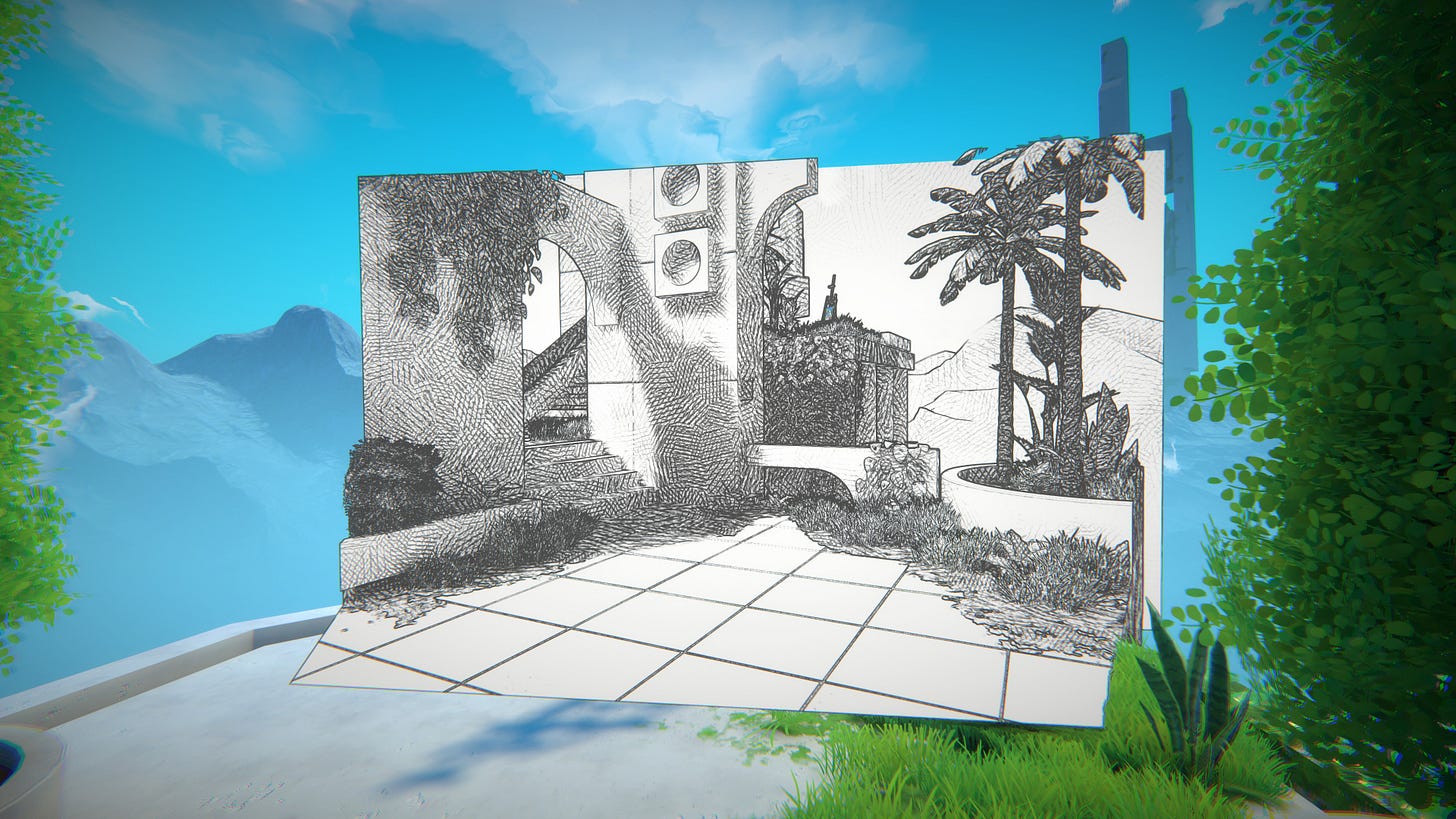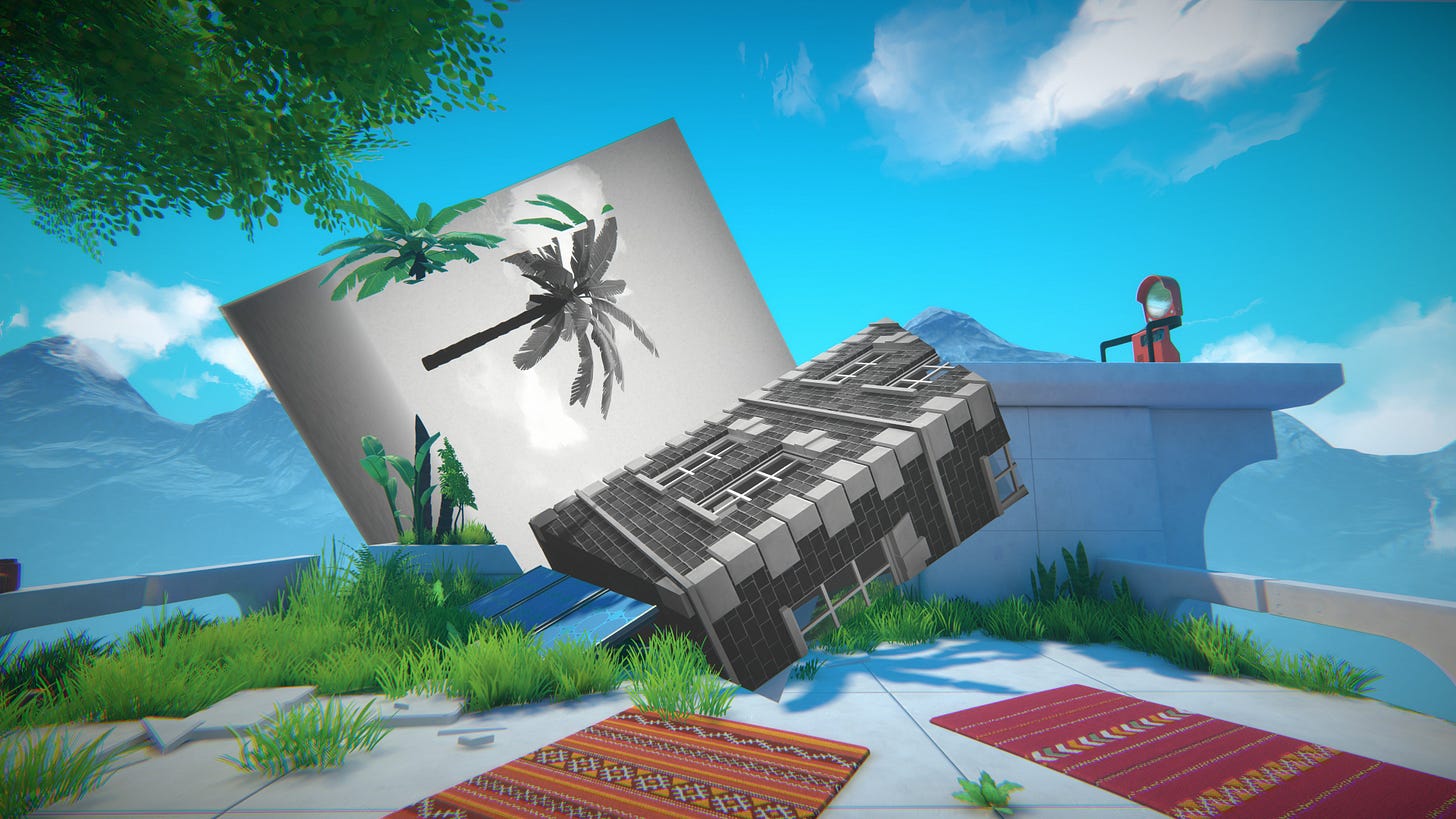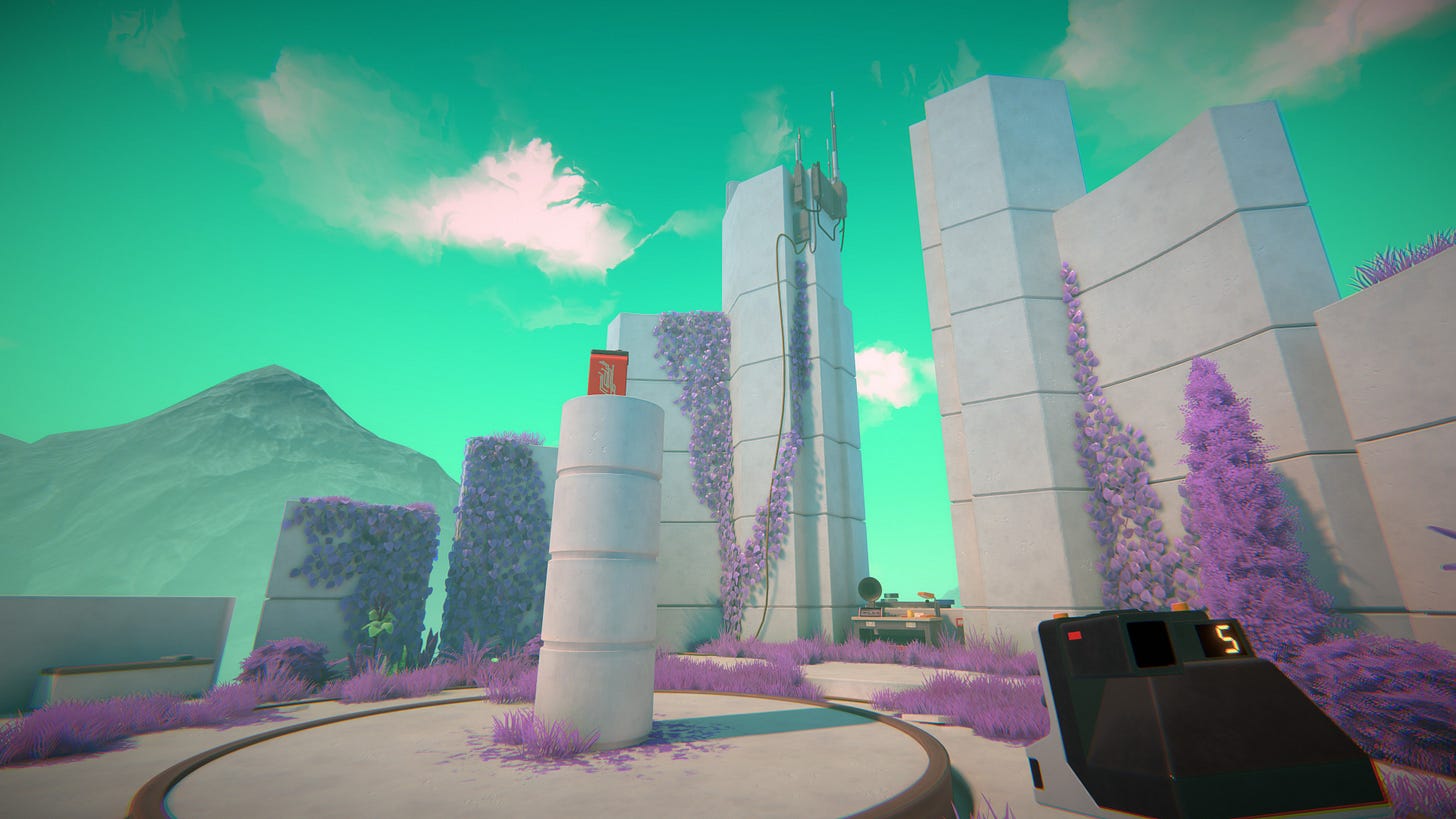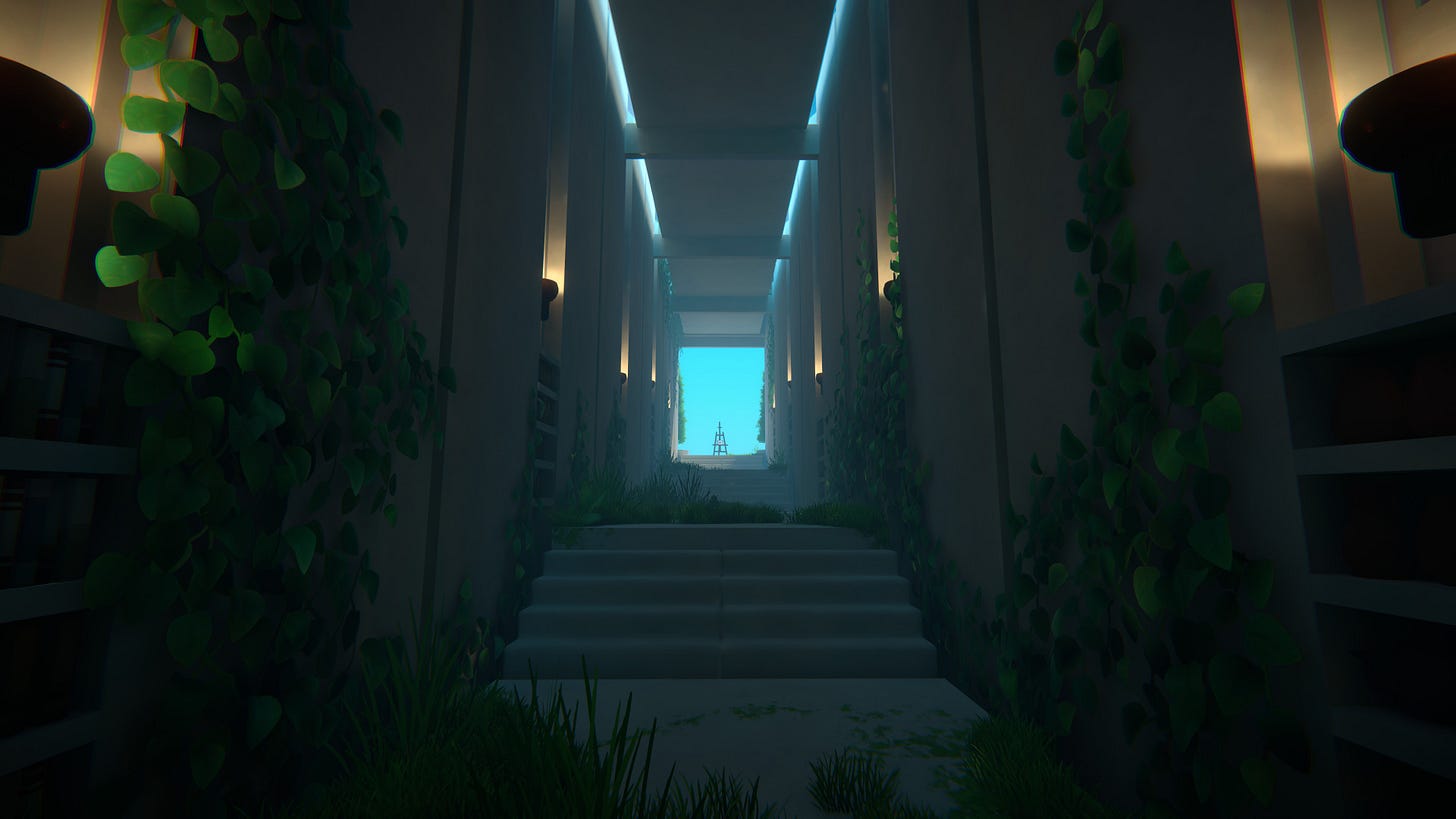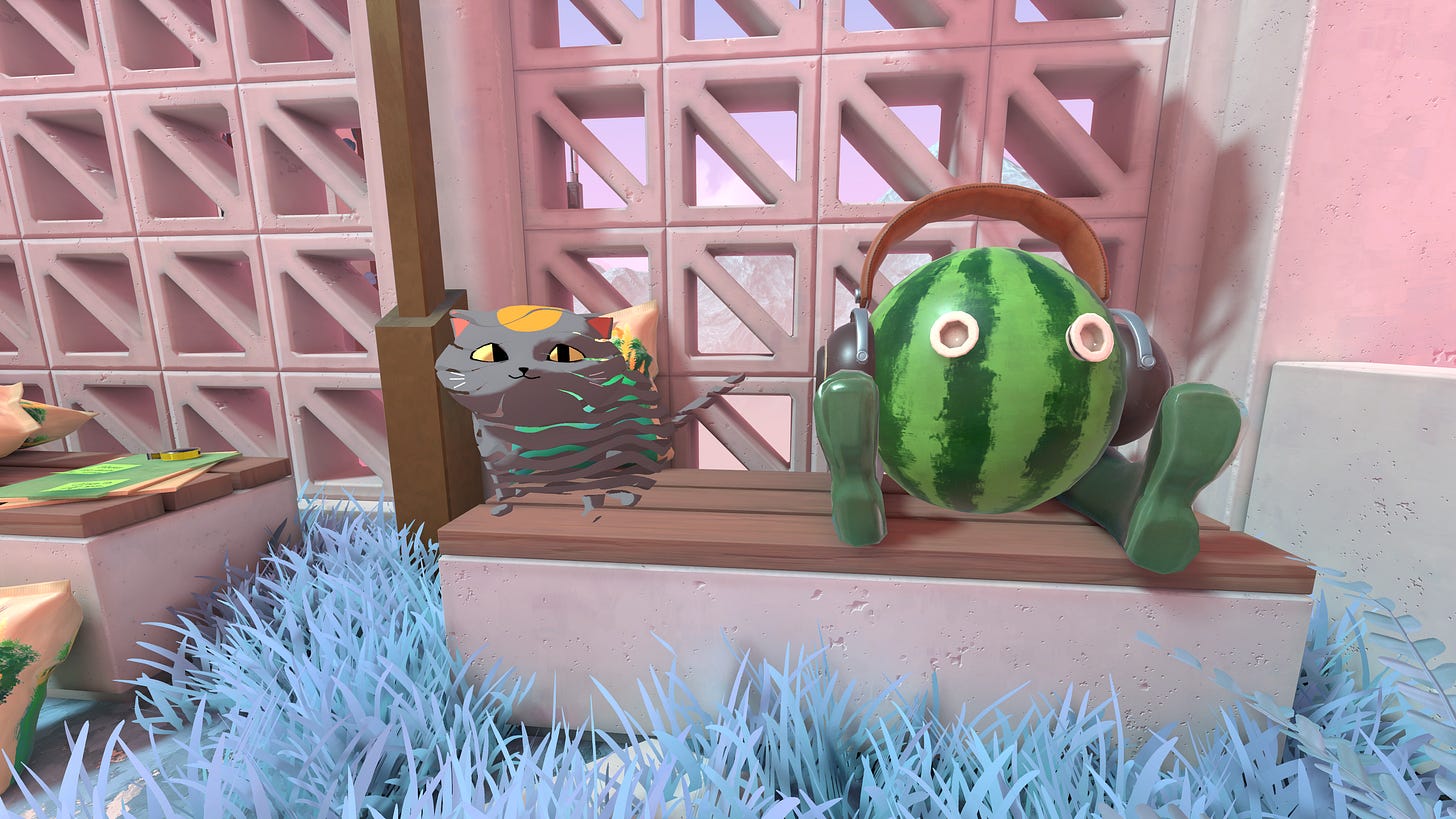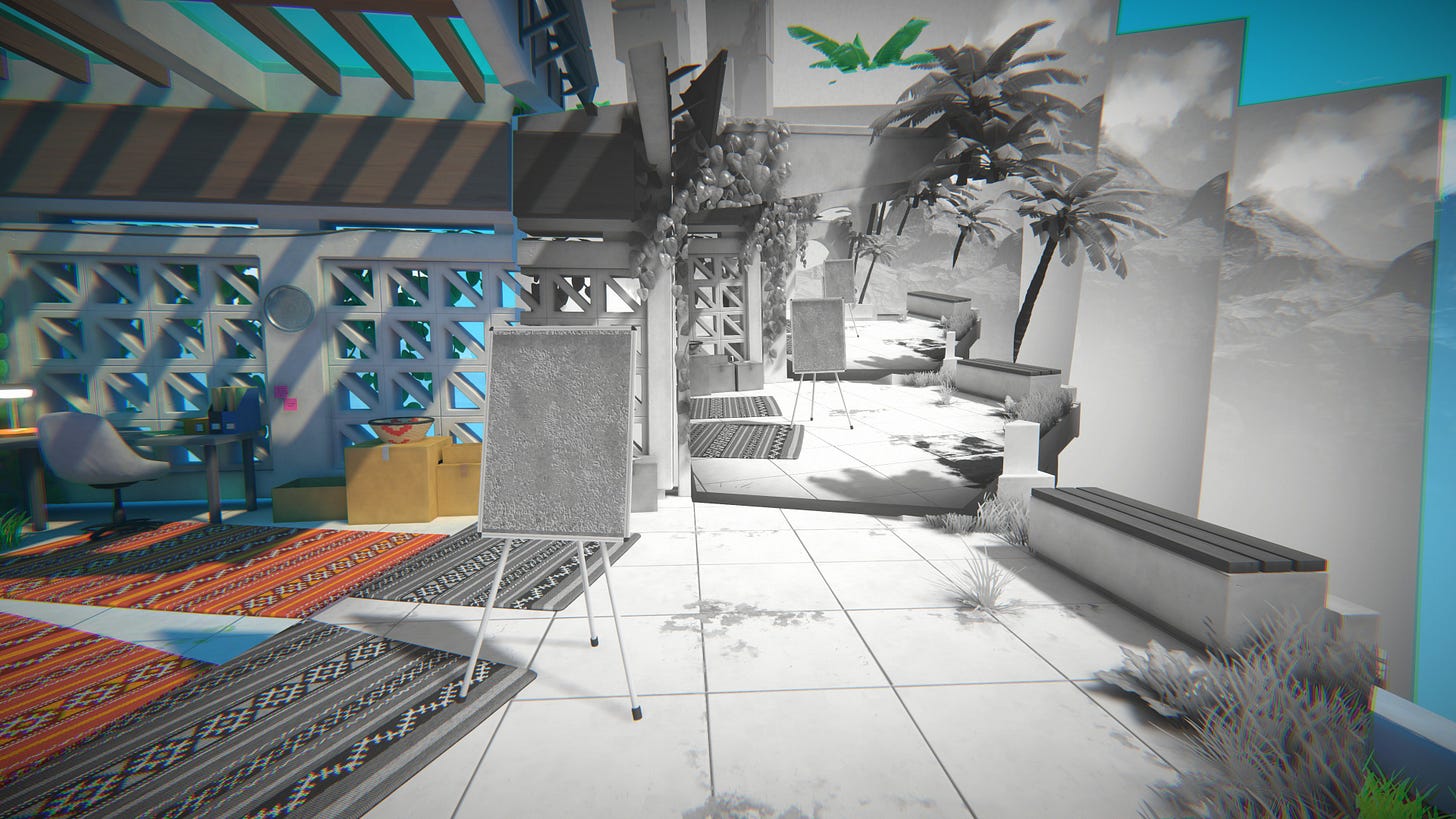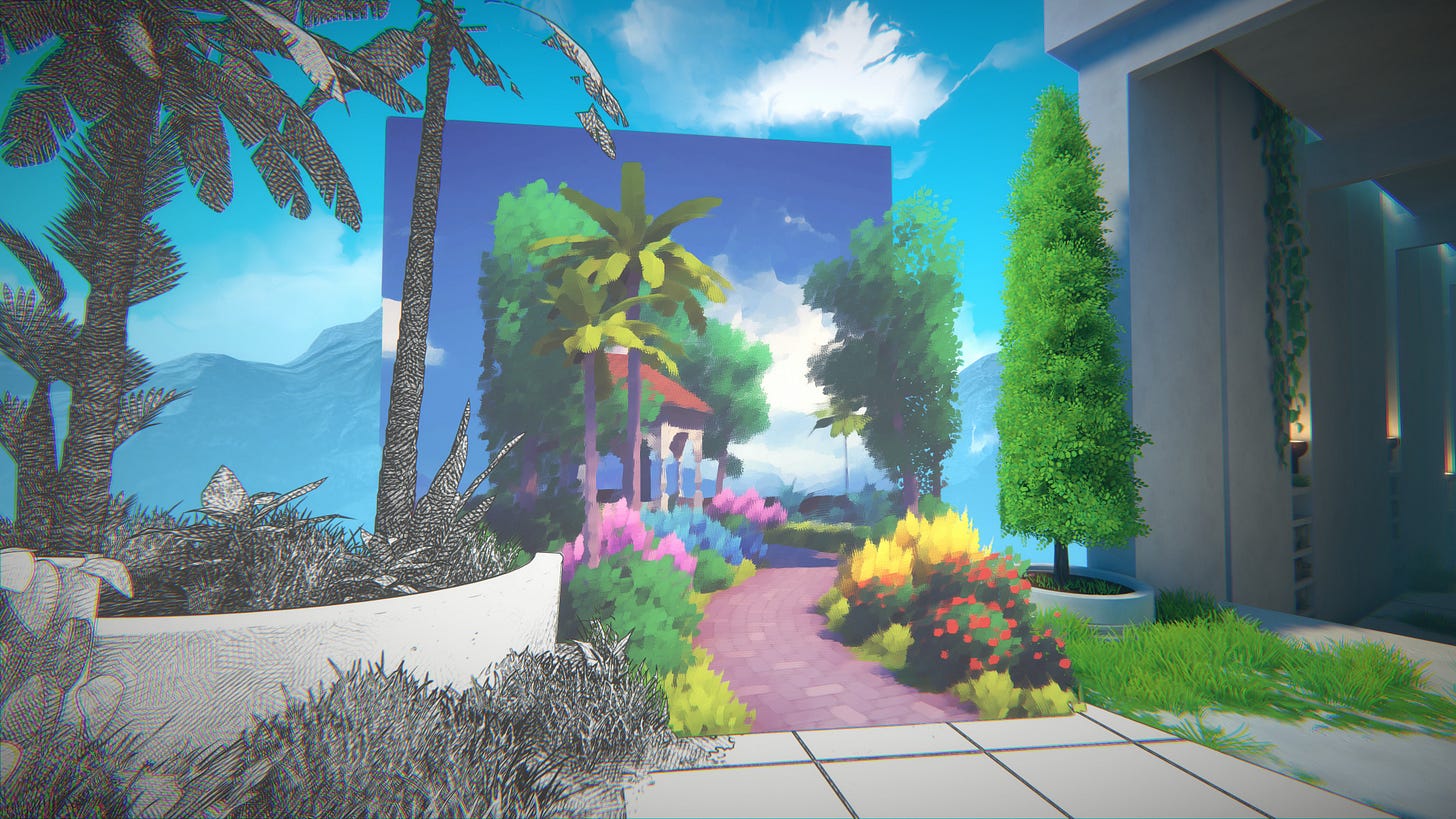Viewfinder Review
Gameplay that pushes the puzzle genre forward, and a rather uninteresting premise that pulls it back
From my perspective, I would say that the puzzle genre has been starved for content for over a decade. One would have thought that the successes of titles like Portal and The Witness would be the catalyst for a rush to carve out space in one of the few areas in video games that isn’t overcrowded. Instead, there are very few modern puzzle games being developed, and even fewer that are actually pushing the genre forward. This is why when I first heard of Viewfinder, I started getting antsy with excitement. The game pitched well in a trailer: use perspective to your advantage and create your own unique solutions to the game’s challenges. It was a mind-bending concept that I was eager to put to the test. To my surprise, when everything was said and done, I could confidently say that the puzzle gameplay lived up to all its promises. Unfortunately, it was when I started looking for more that I ran into some trouble. Let’s break it down.
Viewfinder is a game that is hard to describe with words alone. The main concept of the game is that you’re using perspective to place objects in the world (which makes them bigger, smaller, etc.) to make creative solutions to the puzzles. The concept on its own is not unique; in fact, the game Superliminal did something very similar just a few years ago. The differentiating factor is how you acquire the objects you will use as tools. You are given a camera, and with it, you can take a picture of anything in the world, then use that perspective to frame the contents of that photo and place it back into the scene. I’m not sure that explanation made sense, which is why if you’re not following, I highly suggest you watch a trailer for the game before reading further.
Ultimately, the mechanic makes for a ton of situations that really break your brain as you try and grasp what you need to do. It felt like I was doing mental gymnastics in the best way. The levels are organized by these hub areas, and in each area, some terminals will send you into the puzzle rooms. When jumping into each new room, I felt this rush of excitement knowing that I would have to untangle my mind to be able to tackle the challenge before me. There was no getting comfortable because as the game progresses, so do the challenges. The mechanics slowly start to evolve. Not so much that they leave the player behind, but enough to continuously try to throw you slightly off your puzzle-solving rhythm.
The creative mechanics and expert puzzle designs culminate in what I would consider a near-perfect puzzle-solving experience for what they were going for. The puzzles are challenging, but not too hard. For many puzzles, there are nearly endless solutions because you are ultimately in control of how the world around you evolves. The challenges themselves are short, so you don’t often get frustrated or tired with one single problem. I can’t speak for everyone, because each player will solve puzzles at their own pace, but I felt like I was going through puzzles at a pretty fast pace, never getting stuck on any one challenge for more than a couple of minutes, and I was always eager to do “just one more puzzle”. I beat the game and all the bonus puzzles in just two sittings, but I could have easily gone for a couple more hours. If I had any complaint about the puzzles, it’s that there are too few.
The best compliment I can give this game is that it seems to nail all the things that I feel are needed for a great puzzle game. The challenge is there, sure, but there’s also this constant factor of intrigue and amazement. The rush of endorphins you get when you solve a tricky puzzle is also replicated when you discover a new way to use the mechanics for the first time. There were just as many “Oh that’s how you do that” moments as there were “Oh I didn’t know you could do it that way” moments, which made me feel like I was being ushered through a hall of curiosities that perpetually had my attention.
Great. Nearly three paragraphs of glowing praise for the puzzle system in a puzzle game. Case closed. This is a 10/10 game and maybe one of the best puzzle games of all time, right? Well…not exactly. I did really enjoy this game, but I also felt like, outside of the core gameplay mechanics, a lot was either missing or rather unremarkable. If this were a pop concert, the lead singer did their job, but the backups and stage effects all dropped the ball, which unfortunately affected the whole experience.
The accouterments in Viewfinder were severely lacking. The story, the characters, the music, pretty much everything. I mentioned Portal and The Witness at the top of this article. The fantastic thing about those games is that they go above and beyond. They have fantastic puzzles, but in many ways, the best moments are bigger moments built on top of the puzzles. For example, watching the story of Glados and Aperture Labs unfold in Portal or uncovering the secrets of the island in The Witness. They provide great gameplay, but then guide the player into something greater as the “Oh Wow” moment. Viewfinder certainly tries this, but the attempt falls very flat.
At the beginning of the game, they have a rather unexpected moment. I won’t spoil it, but it was something that made me perk up and get excited about what could be happening with the story of the game. It was an early sign that, although they were fun on their own, these puzzles were a means to a much bigger prize in the form of story and lore. Maybe thirty minutes after that moment, I soon realized, regardless of what the end of the game had waiting for me, I most likely wouldn’t care. As I started picking up the most generic sticky notes around the levels, a fear washed over me. The fear that this game was going to have some of the most bland characters and a generic story was spoon-fed to me the whole time.
It was a fear that quickly turned into a reality as I continued to pick up unimportant sticky notes with text that I could never see any person writing in real life. In addition to the written lore, I also repeatedly came upon the most scripted-sounding audio logs that I’ve heard in a minute. Everything felt plastic and artificial. Nothing I read or heard felt like it came from a believable world. While the puzzle gameplay was actively pulling me in, the terrible writing and story beats were continuously reminding me that this was just a random video game that I shouldn’t really be invested in.
The music didn’t do the game any favors either. While it wasn’t bad, it also wasn’t very exciting or memorable. The parts of the game that were responsible for immersing me were actively breaking me out of my immersion. It was this push and pull of me being excited to do more puzzles, but also me being completely uninterested in the in-game reason for doing them.
There was one saving grace: the visuals. I thought the art style was quite enjoyable for what the game was going for, and there were a lot of stylistic changes throughout the game that helped add to the world and the levels I was playing through. There were also filters that you got by doing bonus challenges that could change how the world looks, and although that’s typically something I don’t interact with in games, it was done well here, and it helped keep things fresh.
Now, some may think I’m wrong for criticizing a puzzle game for everything but the puzzles, but in the end, regardless of the genre, it is a complete experience I am reviewing. At the beginning of the game, Viewfinder pitches the player on two things: fun perspective puzzles and a story surrounding the people who built them. The puzzles were great, and in fact, they exceeded my expectations, but the story was actually the opposite. The more I interacted with the story, the less I became invested in the game. It took me out of the moment, and instead of ending as a memorable complete experience, it was more like I did a bunch of cool puzzles for some uninspired reason and will now go about my life, never to think about this full game again.
I would recommend Viewfinder to puzzle enthusiasts. I think the core gameplay stands up there with the most well-regarded puzzlers out right now. There were some fun and unique challenges, and the game didn’t overstay its welcome. But for folks expecting an exciting and full experience similar to some of the greats of the genre, maybe look elsewhere. The experience as a whole felt like a way to show off the cool perspective mechanics as opposed to a complete top-to-bottom experience. Nevertheless, I am happy I had the opportunity to play it, and I’m excited about how Sad Owl Studios takes their learnings into their next project.



